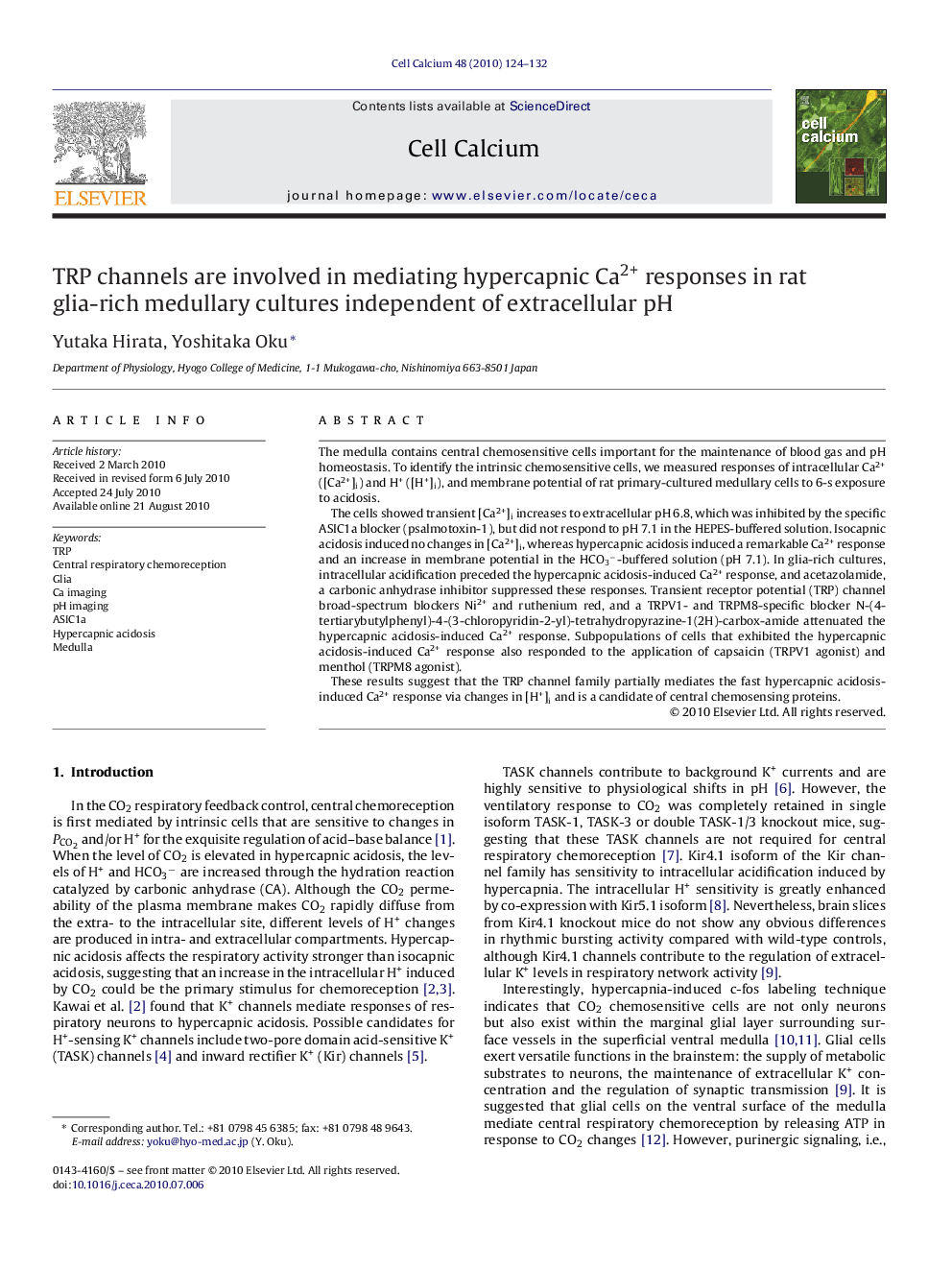| Article ID | Journal | Published Year | Pages | File Type |
|---|---|---|---|---|
| 2166277 | Cell Calcium | 2010 | 9 Pages |
The medulla contains central chemosensitive cells important for the maintenance of blood gas and pH homeostasis. To identify the intrinsic chemosensitive cells, we measured responses of intracellular Ca2+ ([Ca2+]i) and H+ ([H+]i), and membrane potential of rat primary-cultured medullary cells to 6-s exposure to acidosis.The cells showed transient [Ca2+]i increases to extracellular pH 6.8, which was inhibited by the specific ASIC1a blocker (psalmotoxin-1), but did not respond to pH 7.1 in the HEPES-buffered solution. Isocapnic acidosis induced no changes in [Ca2+]i, whereas hypercapnic acidosis induced a remarkable Ca2+ response and an increase in membrane potential in the HCO3−-buffered solution (pH 7.1). In glia-rich cultures, intracellular acidification preceded the hypercapnic acidosis-induced Ca2+ response, and acetazolamide, a carbonic anhydrase inhibitor suppressed these responses. Transient receptor potential (TRP) channel broad-spectrum blockers Ni2+ and ruthenium red, and a TRPV1- and TRPM8-specific blocker N-(4-tertiarybutylphenyl)-4-(3-chloropyridin-2-yl)-tetrahydropyrazine-1(2H)-carbox-amide attenuated the hypercapnic acidosis-induced Ca2+ response. Subpopulations of cells that exhibited the hypercapnic acidosis-induced Ca2+ response also responded to the application of capsaicin (TRPV1 agonist) and menthol (TRPM8 agonist).These results suggest that the TRP channel family partially mediates the fast hypercapnic acidosis-induced Ca2+ response via changes in [H+]i and is a candidate of central chemosensing proteins.
